Last updated on April 16, 2024
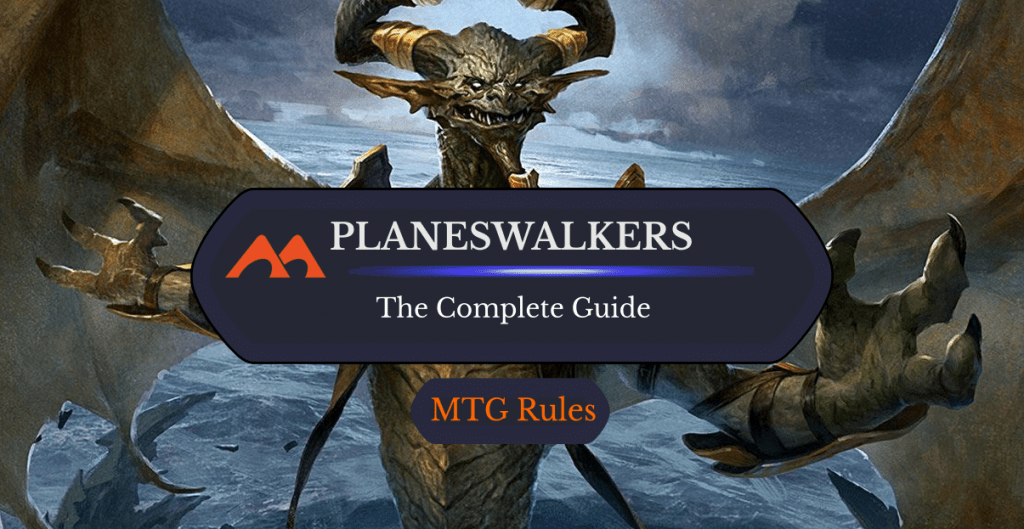
Nicol Bolas, the Arisen | Illustration by Svetlin Velinov
Planeswalkers. You’ve probably heard the word before, but what exactly are they? Who are planeswalkers? What do they do? If you’re wondering any of these questions, then you’re in luck! You have the answers straight ahead with all there is to know about planeswalkers.
The first thing is the origin of the word, because it’s been around since the very beginning. In the first set of MTG, Alpha, the “planeswalker” referred to Magic players—that’s right, you! Players took on the roles of a planeswalker to do battle.
The planeswalker cards within the game, were introduced much later. They represent powerful beings that can move from plane to plane (think of planes as different universes). If you want more info, we’ve got a crash-course on the multiverse in our Ob Nixilis tell-all.
Because each new set usually takes place on a different plane, being able to travel between them is crucial for MTG’s main characters (i.e., planeswalkers) to be able to come back again and again. Throughout Magic’s history, you’ve followed different planeswalkers, first, let’s break down how these cards actually work because they can be pretty confusing if you’re new to the game. Let’s start this journey!
Planeswalker Rules: How They Work

Elspeth, Sun's Champion | Illustration by Eric Deschamps
Planeswalkers are a unique type of permanent spell in Magic with some very special rules.
Just like any other Magic card, planeswalkers have a name, mana cost, and type, but there are some extra pieces that you need to know that are unique to them: loyalty counter, static abilities, plus abilities, minus abilities, and ultimates.
Parts of a Planeswalker Card
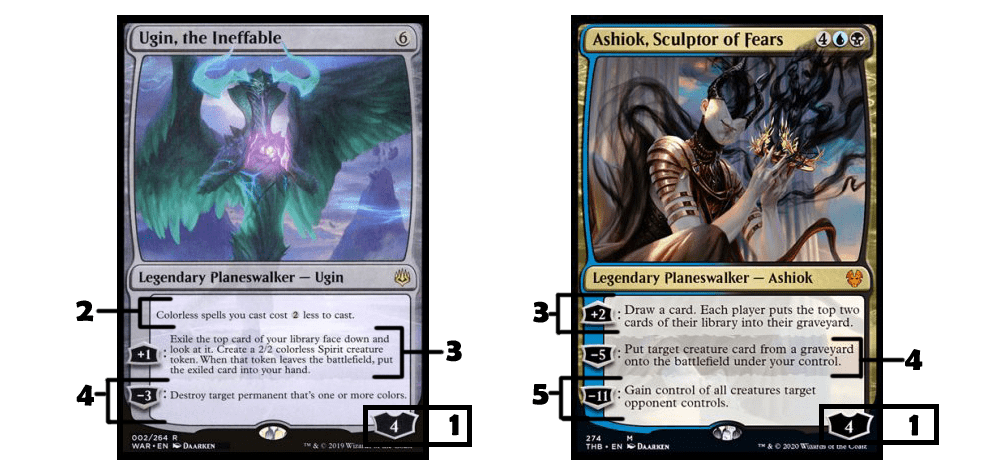
1. Loyalty counter. All planeswalkers have a number of loyalty counters that they enter the battlefield with upon being cast called “starting loyalty.” Ashiok, Sculptor of Fears enters the battlefield with 4 loyalty counters. If a planeswalker's loyalty is ever reduced to zero (or less), it dies and goes to the graveyard.
2. Static abilities. Some planeswalkers have a static ability that applies as long as they’re on the battlefield. Take Ugin, the Ineffable as an example: “Colorless spells you cast cost less to cast.” As long as Ugin is on the battlefield, your colorless spells will be two mana cheaper. Sometimes this is called a “passive.”
3. Plus abilities. These abilities add loyalty counters to the planeswalker’s loyalty equal to its number. Our Ashiok's plus ability is +2, which means two loyalty counter would be added to its total loyalty when the ability is used.
4. Minus abilities. Using these abilities removes loyalty counters from your planeswalker’s loyalty. Our Ugin's minus ability is -3, which means three loyalty counters would be removed from his total loyalty when the ability is used. You can't put your planeswalker into negative loyalty using their abilities, so they need to have loyalty counters equal to the minus ability you want to use.
5. Ultimates. The ultimate is the ultimate pay-off for your planeswalker. It will always be a minus ability and you can find costs anywhere from -X to -14. Our Ashiok’s ultimate is -11 and will remove 11 loyalty counters from its total loyalty when used. Just like minus abilities, Ashiok would need to have at least 11 loyalty counters to use its ultimate. Ultimates frequently have very splashy abilities that often equate to “you win the game.”
That's the bulk of what you need to know about the rules of planeswalkers and how they work. They can be pretty daunting when you first start to play with them, but they’re well worth the effort. They bring so many interesting and powerful plays to the game that even if you don’t play with them, you’ll come across them for sure and it’s good to know how to deal with them.
You can attack planeswalkers with creatures. If your opponent has a planeswalker and you want to get rid of it, you can attack it directly instead of attacking your opponent. They can then block with their creatures as they normally would. The planeswalker loses a number of loyalty counters equal to the damage done by each unblocked creature attacking it. You can also target planeswalkers with instants and sorceries if “any target” or “planeswalker” is the potential target of the spell.
All planeswalkers that can become a creature—think Gideon of the Trials—have summoning sickness the turn they enter the battlefield like any normal creature, meaning they can’t attack that turn. Unless you have a card that gives creatures haste, like Fires of Yavimaya, of course.
How Do Loyalty Counters Work?
Loyalty counters are a measure of a planeswalker's health and usability. You increase the loyalty counters with positive (+) loyalty abilities and decrease them with minus (-) loyalty abilities, or when your planeswalker takes damage from an attacking creature.
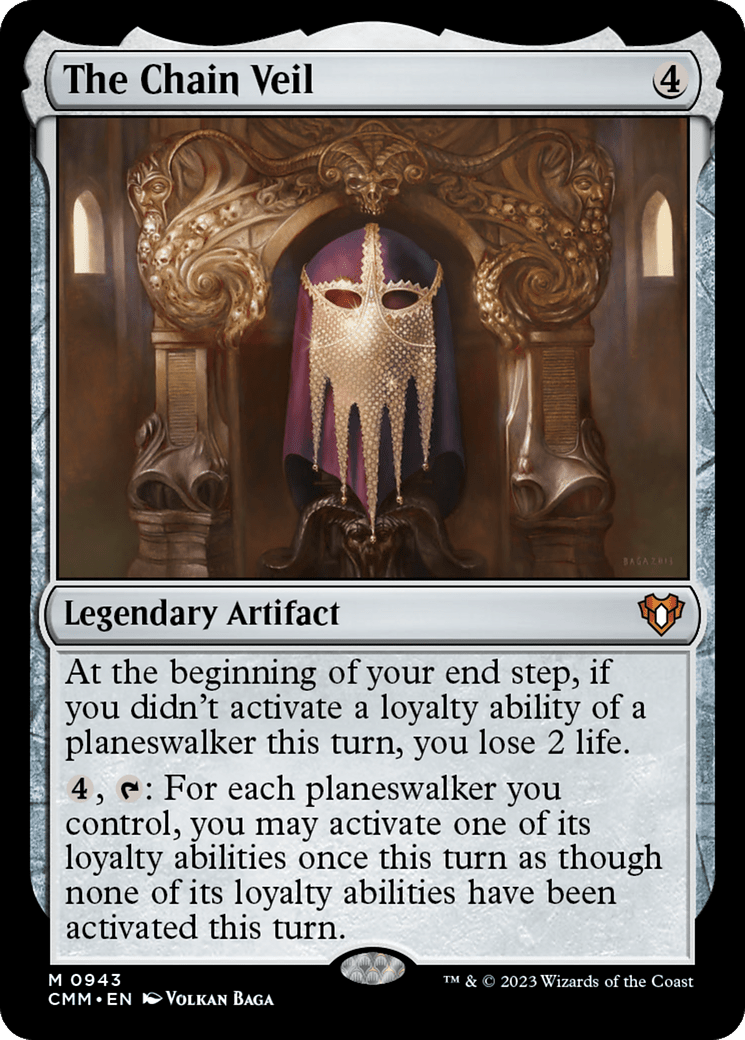
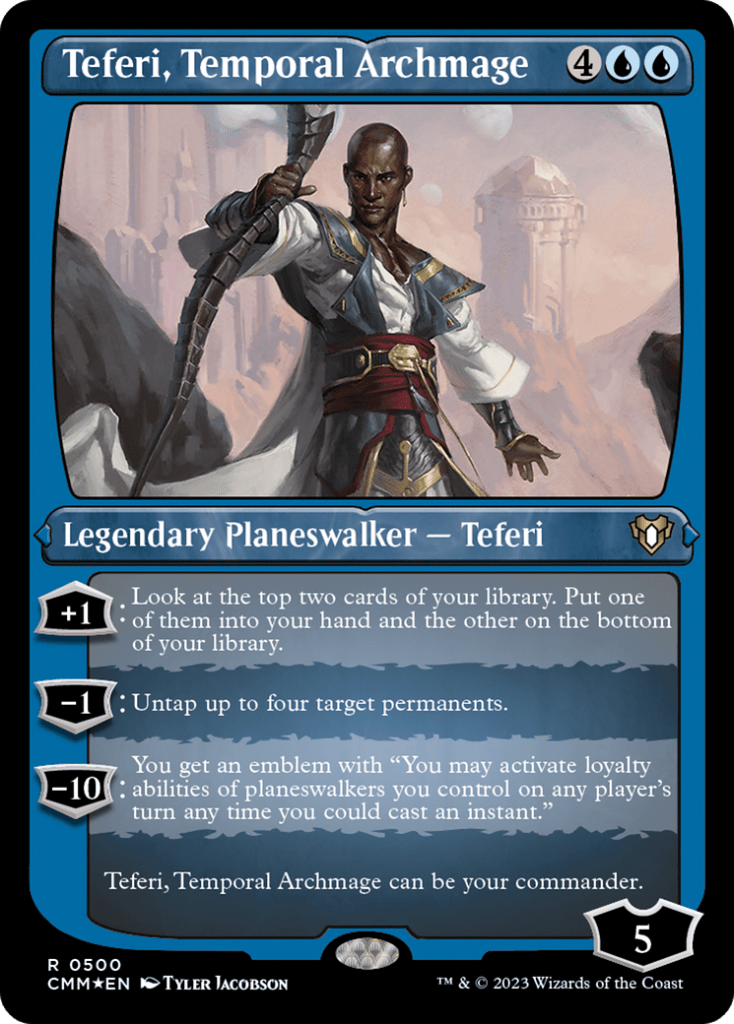

You can only activate the loyalty abilities of planeswalkers as a sorcery. This means you can only activate it on your turn and, unless you have something like The Chain Veil or Teferi, Temporal Archmage’s emblem in play, you can only activate one ability per turn. You can, however, use a loyalty ability the turn your planeswalker enters the battlefield.
History of Planeswalkers in MTG
The First Planeswalkers
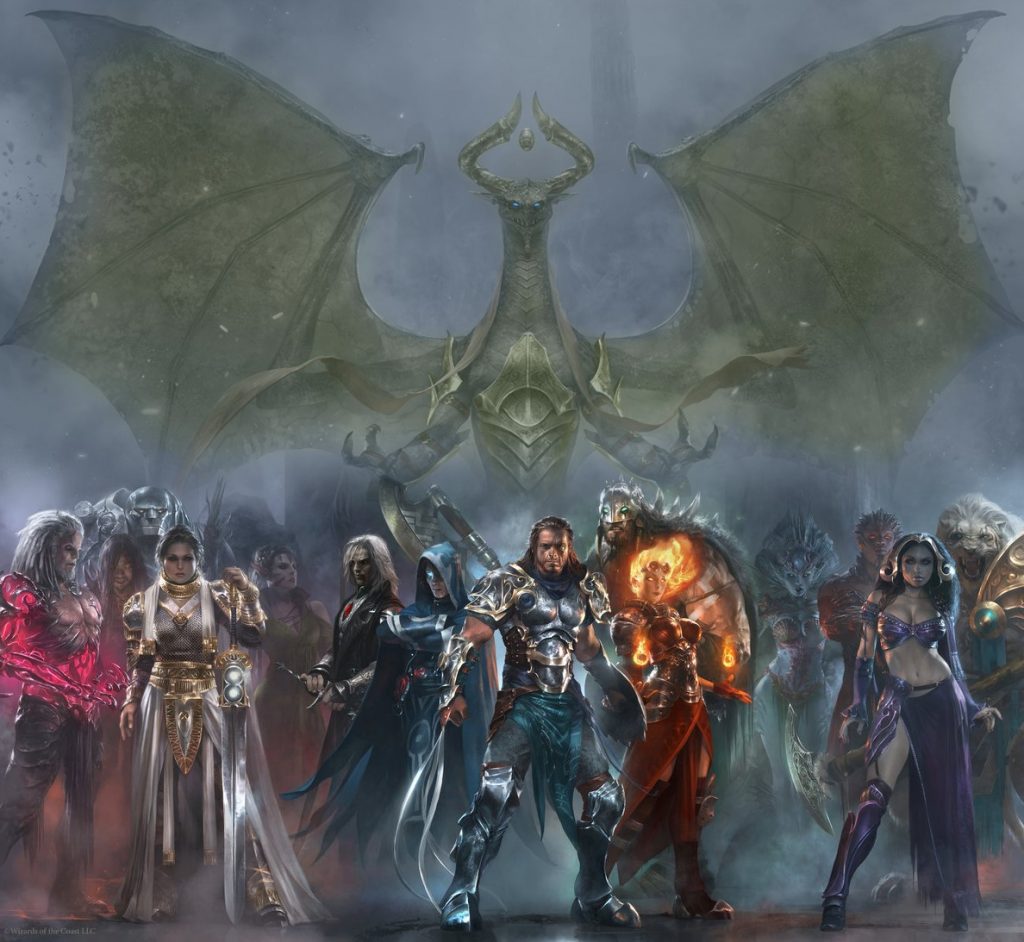
Planeswalkers have always existed in some form in the game, though they haven’t always existed as actual, physical, printed cards. Their inception came about to give the game a physical representation of one of the two biggest pillars of Magic: the color wheel and wizards fighting with magic. The color wheel was already well represented, but the “wizards fighting magic” aspect proved more difficult to realize. At the time, you and I, the players, fighting each other in a game of Magic, were the best representation as the physical planeswalkers of the game.
Matt Cavotta came up with the idea to create actual planeswalker cards while helping design Future Sight. Believe it or not, it took some convincing. Eventually, Mark Rosewater realized that this could be the perfect way to finally represent “wizards fighting with magic” in the actual game. The idea proved too big for Future Sight, so this bold new move was pushed five months later to Lorwyn in October 2007 and the rest is history.
Planeswalkers hit center stage in a big way with the first five planeswalkers printed for the game:
When Do You See Planeswalkers?
Usually, you see planeswalkers as mythic rares, thanks to Shards of Alara, even the original five which were originally printed at rare, have been reprinted at mythic rare. Then in War of the Spark not only did they print a whole slew at rare, but uncommon planeswalkers were popping out of packs left, right, and center.
Mark Rosewater said it best:
The main protagonists and antagonists got to be mythic rare. The rest of the Gatewatch was rare. The other planeswalkers' rarity placement was based on their design. If it could be hybrid, it was uncommon, and if it wanted to be a traditional two-color gold card, it had to be rare. Color dictated some slots (Vraska, for example, was the only black-green planeswalker in the set and thus had to be hybrid) as did slot placement (ten cards had to be monocolor uncommons), but mostly it was based on what rarity the best design for each planeswalker felt most suited.
But are we going to keep seeing planeswalkers being printed at lower rarities all the time now? Mark Rosewater also answers that question:
It's a tool in our toolbox available to future design teams. The plan is for planeswalkers to be mythic rare by default, but if a design team feels that a rare (or uncommon) planeswalker would serve the set, they have access to it.
Are Planeswalkers Evergreen?
Yes, you should expect to see at least one planeswalker every set. There’s no need to worry that WotC will throw powerful planeswalkers around willy-nilly just yet.
They've become the most popular card type in Magic and have changed the face of advertising for Wizards, all because they are the perfect vehicle for storytelling.
Keeping them mostly at mythic rare makes their stories feel that much more special and important. It made sense for War of the Spark, but such a dramatic story arc takes years to build up.
Role in Storytelling
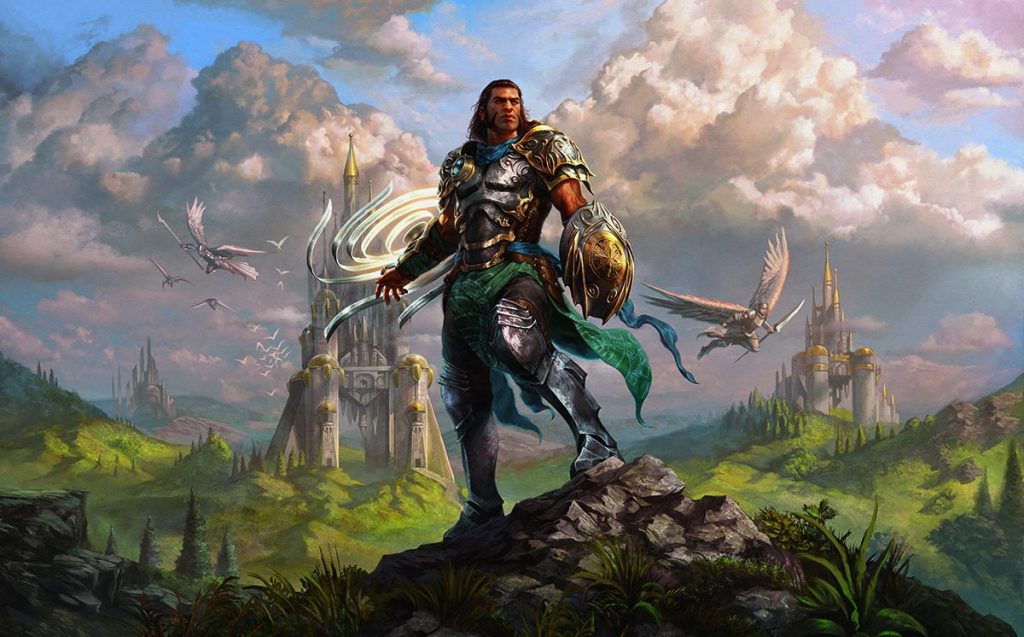
Gideon, Battle-Forged | Illustration by Willian Murai
Before Planeswalkers
Planeswalkers are the face of MTG. But this wasn’t always the case. Magic was promoted differently before planeswalkers. In promotional material, they mostly focused on the set, the creatures within the set, and the mechanics. Of course, this is still done today, but not without a face and that face was missing back in the day. Here are some examples:

Back then, it was the elements that made up the game that Wizards used to promote it. There’s nothing wrong with that, but it can be a little bit hard to connect with what they’re trying to promote. Even when Lorwyn, the set planeswalkers were introduced in, came out, it took a long time for WotC to realize how they could harness the power of characters that we, the audience, could identify with, care about, follow, and learn from. But once they did, they never turned back.
After Planeswalkers

As you can see from the above posters and products, planeswalkers have changed promotional material significantly. They became the people you can walk alongside through the multiverse, discovering amazing new worlds, creatures, people, and civilizations. They became guides and even friends with familiar faces and features you can identify with.
You care about what happens to them whereas there weren’t any characters that you could apply that same feeling to before. It’s one of the smartest things Wizards has done over the years and has made the game better for veterans and new players alike. It has given MTG a globally recognizable identity.
War of the Spark Story
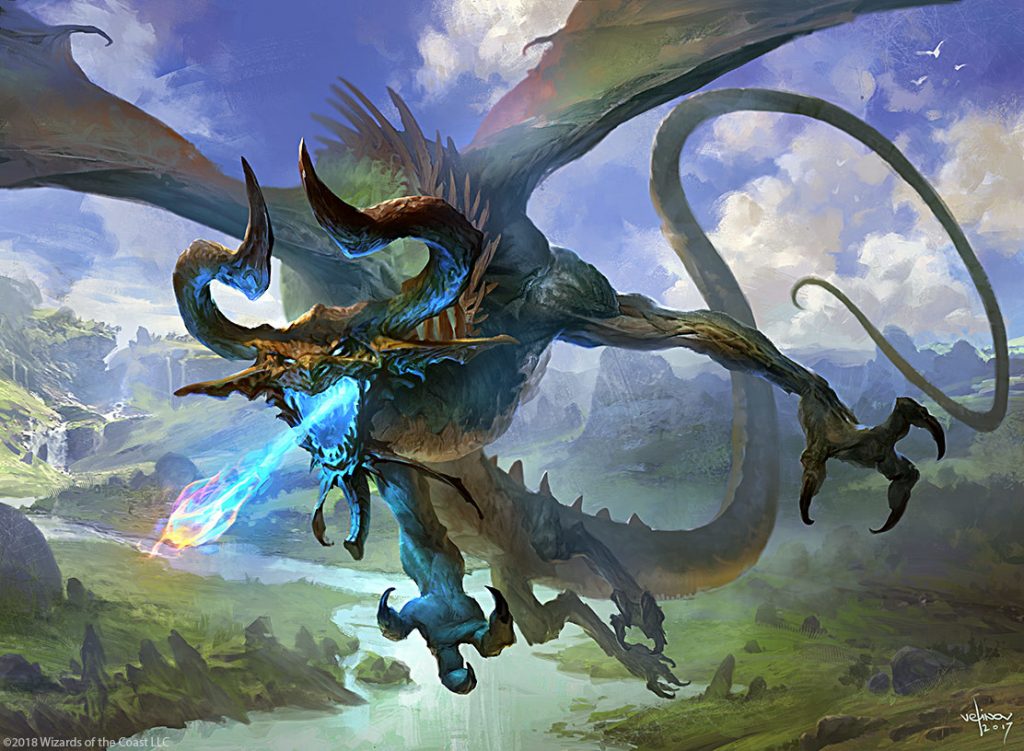
Nicol Bolas, the Ravager | Illustration by Svetlin Velinov
A massive conflict of planeswalkers working with God-Eternals and armies put the grand villain Nicol Bolas against the Gatewatch. The Gatewatch is a band of planeswalkers represented by several colors that took an oath to protect the multiverse. Nicol Bolas twisted several powerful players onto its side and made Ravnica the setting for the most planeswalker-involved story ever and established rivalries and alliances that permeate the lore to this day.
Are Planeswalkers Dead or Alive?
What makes a planeswalker come alive is often extreme stress—in many cases death— that causes the spark inside someone to trigger, and turn an individual into a planeswalker. Story-wise, planeswalkers can die, but between rebirths, origin stories, igniting and losing their spark, there is plenty of space for your favorite character if R&D deems it so.
Because of the passing or desparking of some dominant storyline characters, Wizards can push a few characters to the forefront. You can follow these characters on their exciting adventures, and with so many great characters to choose from, together with the main characters, this leaves a lot of room to weave some very interesting stories. I don’t know about you, but personally, I root for a more diversified focus on multiple characters and less of the “let’s follow these five characters to eternity and back” type of setting that you've endured in the past.
Switching between characters creates tension and excitement as to what will happen to our favorites when you see them again. Will you go to Phyrexia? Kamigawa? An amazing new plane in space? I’m as charged up as you to find out!
Commander Planeswalkers
I mentioned before that there are a handful of planeswalkers that you can use as your commander. This is a sweet alternative to choosing a legendary creature that makes for different deck building and themes to build around. There are about 30 planeswalker commanders which work exactly like a legendary creature as your general would, except that they behave like planeswalkers on the battlefield. Just in case you have any doubts:
- The card sits in the command zone
- It can be cast from the command zone
- You can choose to return it to the command zone any time the card changes zones (i.e., battlefield, deck, hand, graveyard, or exile)
- Every time it’s returned to the command zone it costs an additional two mana to cast
- The card’s color identity represents the colors allowed in your deck
Some planeswalkers start off as legendary creatures, then transform into planeswalkers, and these are certainly eligible commanders, the others that start off in the planeswalker frame, simply state “(this card) can be your commander.” Products such as Battlebond, Commander 2014, and Commander 2018, and the Commander Legends sets contribute to this list of great commander options. I’ve got a feeling that you haven’t seen the last of these yet and that Wizards will add some more interesting characters to this list. Great news for those of you who like to have many different faces for their commander decks!
Double-Sided Planeswalkers
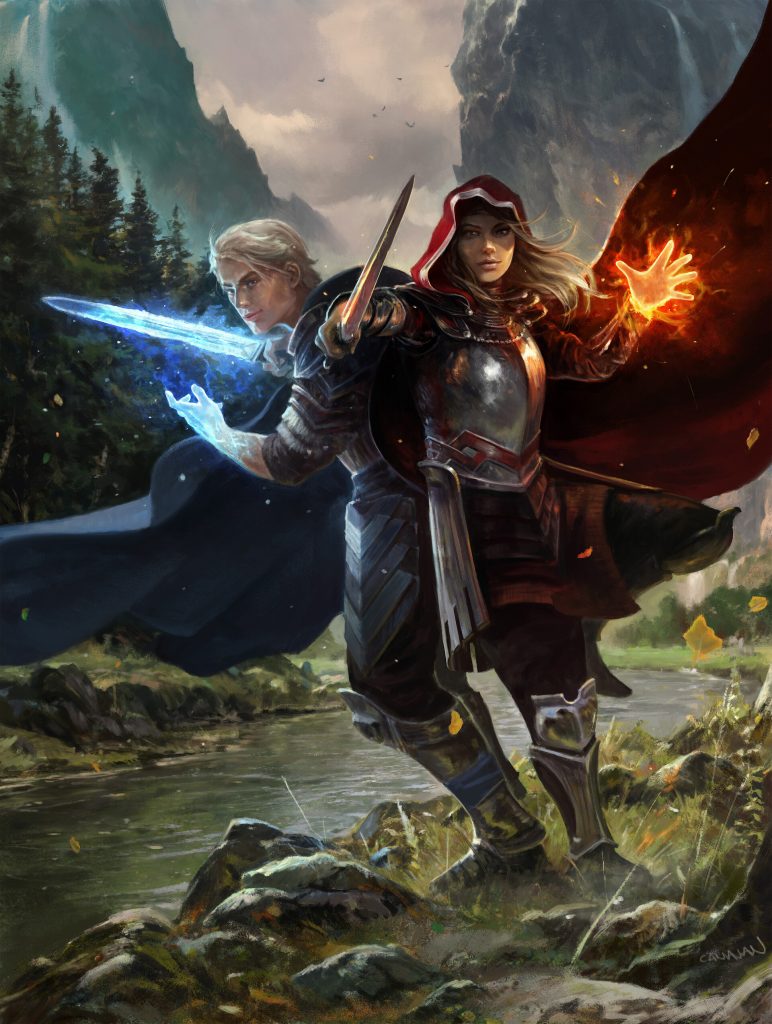
The Royal Scions | Illustration by Scott Canavan
Double-faced cards (or DFCs for short) feature a secondary card on the other side of the card instead of the typical card back. In most cases, these cards are played with their front side up and transform whenever certain conditions are met. In the case of modal double-faced planeswalkers, it can be played either face-up or face-down. These 14 double-faced planeswalker cards are best seen rather than explained:
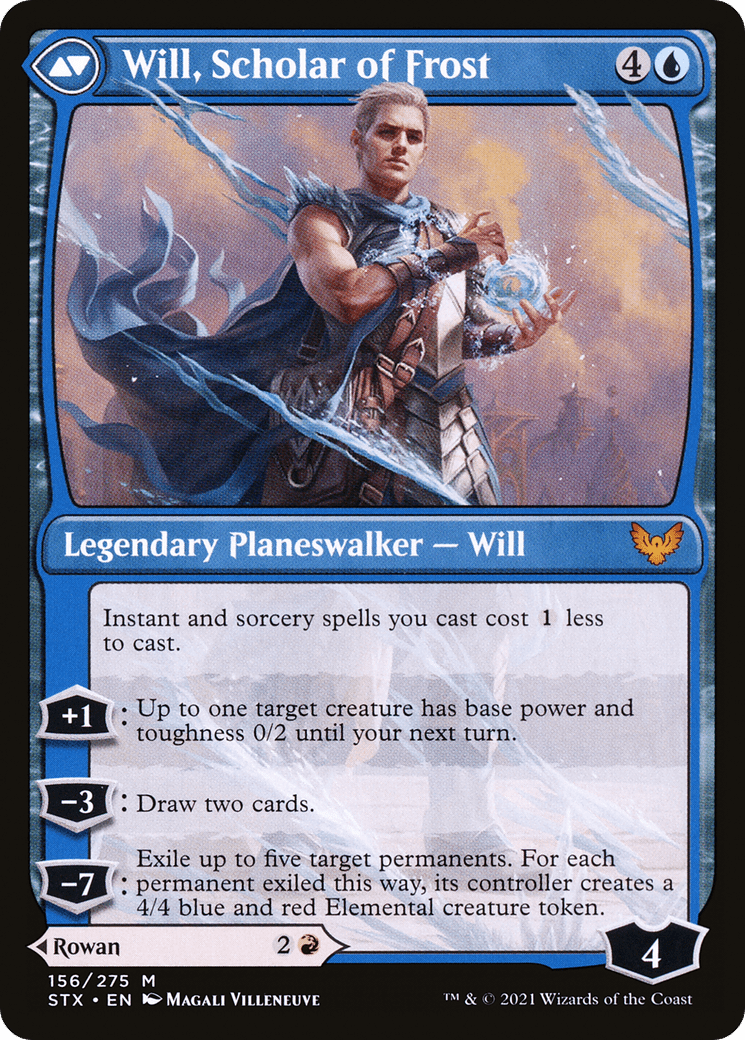
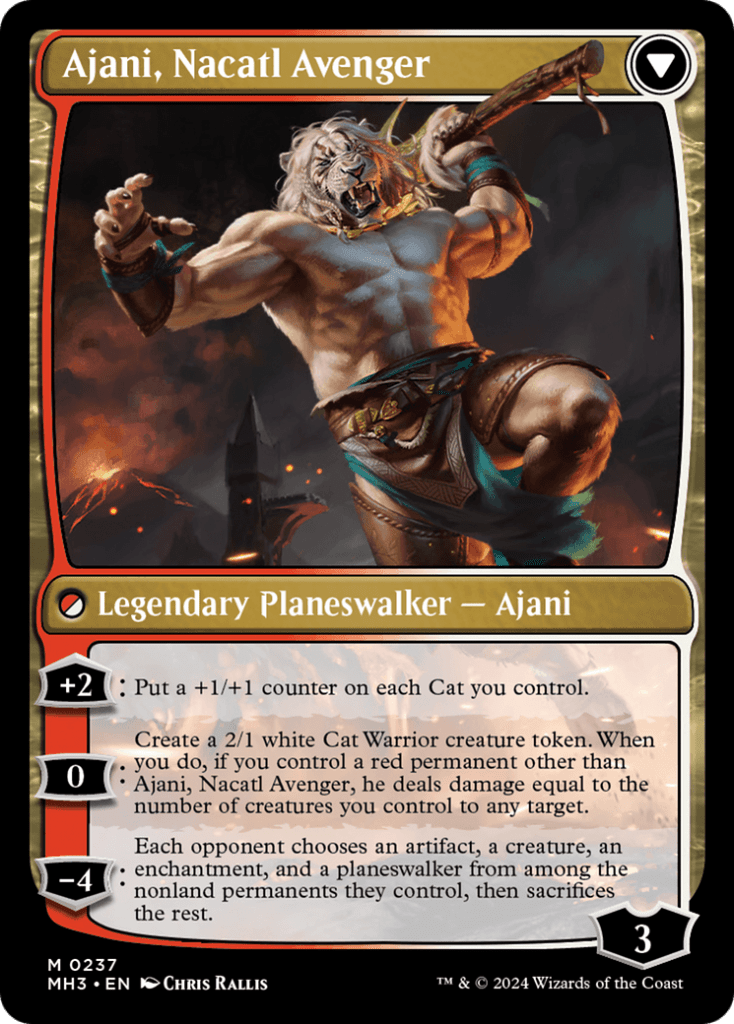

Planeswalker Decks
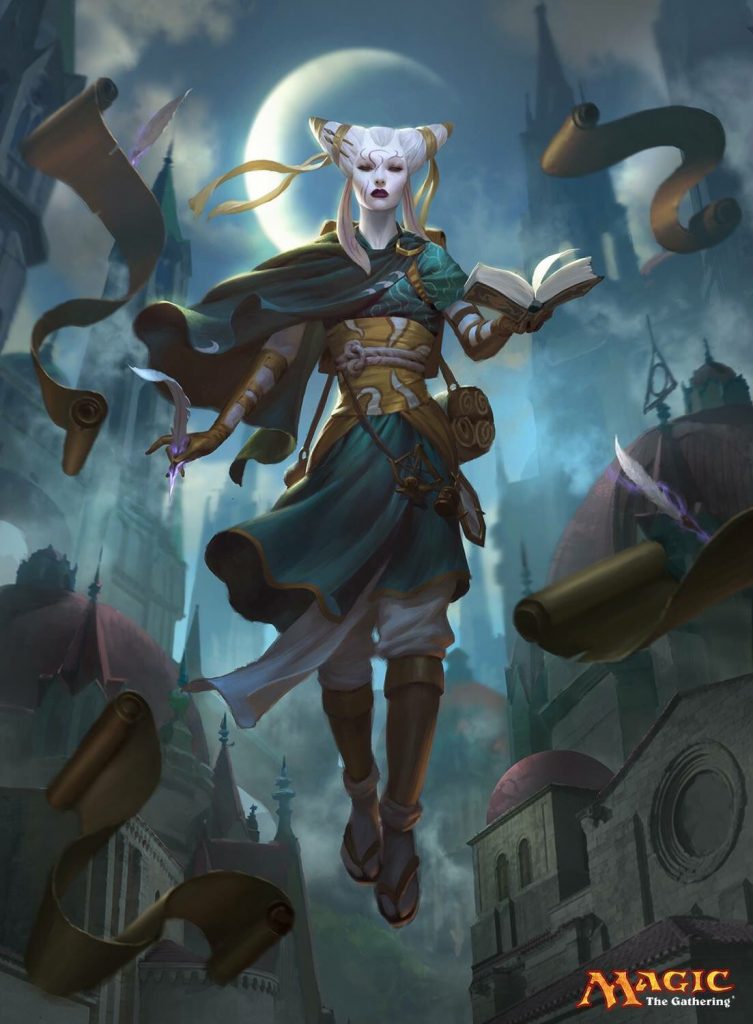
Tamiyo, the Moon Sage | Illustration by Lius Lasahido
You can learn about great starter products in the best starter decks article, and planeswalker decks are great for being among the select few decks that come with free MTGA codes). If you’re not familiar with them, planeswalker decks are ready-to-play 60-card decks for beginning players. They offer a fun and simple way to get better acquainted with the game using a deck that’s well-balanced against other planeswalker decks from the same set.
A few Commander sets feature preconstructed decks with planeswalkers as commanders, there are more powerful commanders out there, but planeswalkers are inherently powerful cards, so putting one of these commanders from Commander 2014, Commander 2018, or Commander Legends: Battle for Baldur's Gate can set you up for a fun time.
On top of all this, these decks are an easy way to get into planeswalker cards. Each deck is represented by one and there’s usually a theme built around that planeswalker to show off what they can do. This is a great introduction to what impact they can have on a game of Magic. So, don’t be afraid to pick them up, let out your battle cry, and charge!
Rules for Deckbuilding
Primarily, treat planeswalkers as legendaries, with no more than four in your deck. Follow the singleton or color identity rules according to your format.
Planeswalkers in Brawl
This one is easy for anyone familiar with Commander, an Arena Brawl deck can have a planeswalker designated for the command zone, and that planeswalker determines the color identity of the singleton deck.
Planeswalkers in Oathbreaker
The Oathbreaker format requires your commander to be a planeswalker. Also in the command zone goes an instant or sorcery that is known as your commander's signature spell, and can only be cast if your planeswalker is on the battlefield.
Are All Planeswalkers Legendary?
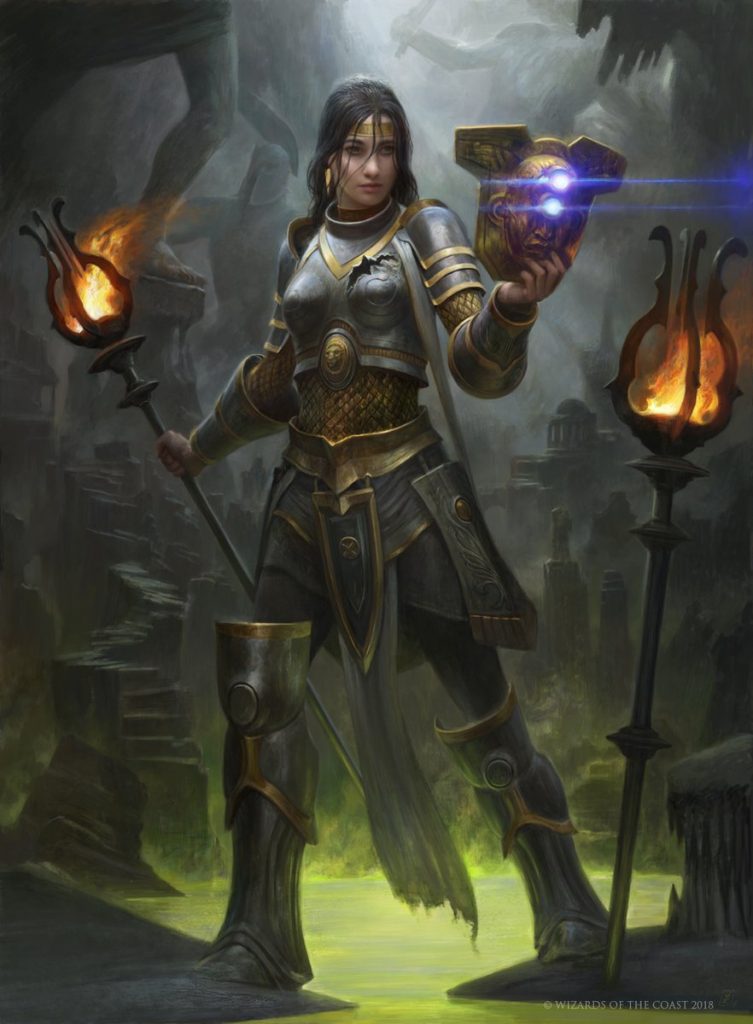
Elspeth, Knight-Errant | Illustration by Zack Stella
Yes, all past and present planeswalkers gained the “Legendary” supertype as of the original Ixalan. This means that Ashiok, Nightmare Weaver’s card type officially reads as “Legendary Planeswalker – Ashiok” even though it doesn’t have the word “Legendary” actually printed on the card. This also means that the legendary rule now applies to planeswalkers.

Yes, the legendary rule states that you can’t have two legendary permanents with the same name under your control. For example, if you have a Nissa, Steward of Elements in play and you cast a second one, you have to pick one that you keep in play and the other will go to the graveyard. This would really only make sense if your Nissa had less than her starting loyalty, but you may as well wait until she’s actually died and then cast the new one.
Note that you and your opponent can both have Nissa, Steward of Elements in play, but you and your opponent cannot have more than one of them on your respective sides of the battlefield. There can be more than one that exists on the battlefield if they’re controlled by different players. If you were to steal your opponent’s Nissa, you would again have to pick which one to keep and the other would go to the graveyard. This move would actually make some kind of sense since you're taking away their planeswalker and, potentially, boosting your Nissa's loyalty.
Even though you can’t have two planeswalkers with the same name in play, you can have more than one of the same type of planeswalker in play as long as they have different names. You can have Elspeth, Sun's Champion, Elspeth, Sun's Nemesis, and Elspeth, Knight-Errant all in play at the same time under your control because none of them shares an identical name with the other even though they all have the “Legendary Planeswalker – Elspeth” type.
Are Planeswalkers Permanents?
Yes planeswalkers are permanents. Many cards name or exclude what they can target, so Acidic Slime and Quiet Disrepair do not hit planeswalkers, whereas Glóin, Dwarf Emissary, Lassoed by the Law, Leyline of the Guildpact, and Bramblecrush can apply to planeswalkers.
Are Planeswalkers Creatures?
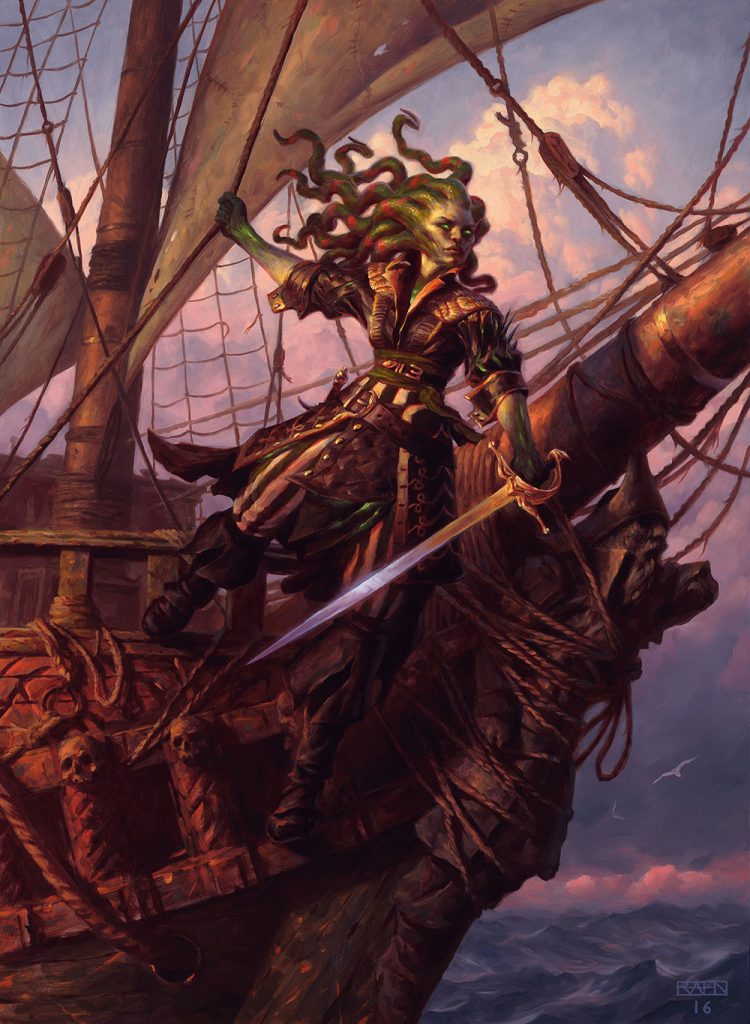
Vraska, Relic Seeker | Illustration by Chris Rahn
No, planeswalkers are not creatures. They are a distinctly different type of permanent that have very different rules. Some planeswalkers can become creatures like Gideon of the Trials or Sarkhan the Masterless, but this is the exception, not the rule.
This also means that the vast majority of planeswalkers cannot “attack” in the traditional sense. Unless it's animated into a creature via a spell or ability, it can only “be attacked” and not do the attacking itself. Planeswalkers often have the ability to do damage (like Chandra), so they sometimes could indirectly “attack” other planeswalkers by targeting them with damage abilities.
When Can You Activate Planeswalker Loyalty? Can You Activate a Planeswalker Ability In Response?
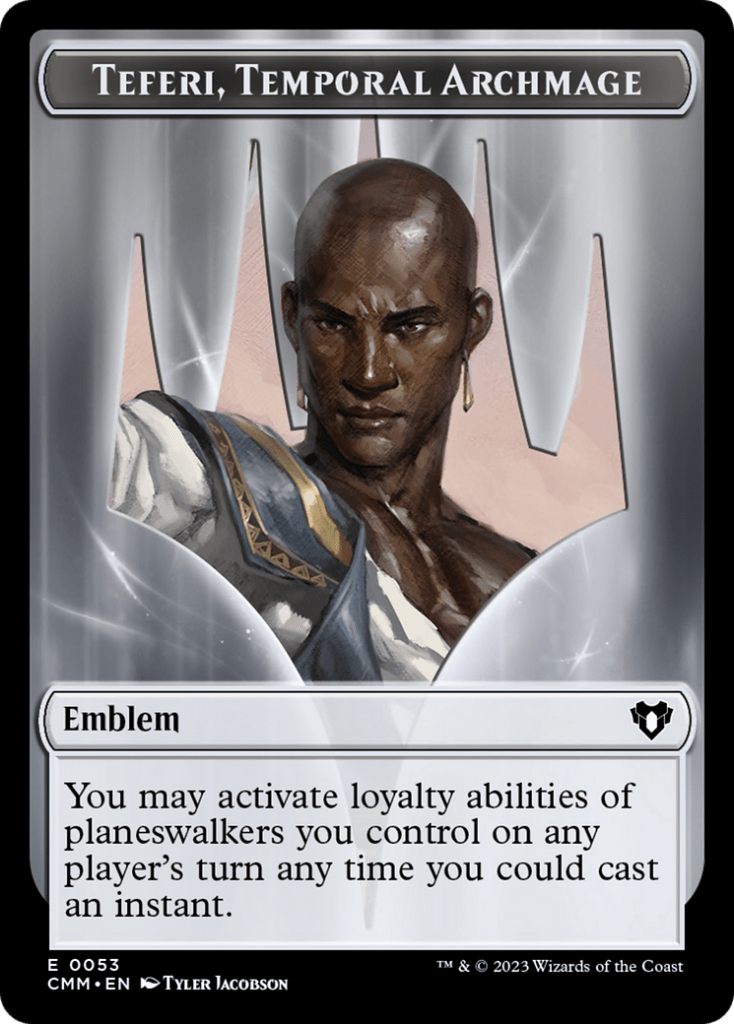
You can activate planeswalker loyalty abilities at sorcery speed, only when you have priority and an empty stack. Generally no, a planeswalker ability cannot respond to another effect unless you have a special effect.
Does A Planeswalker Have Summoning Sickness?
Yes, if you have turned your planeswalker into a creature, and it came into your control the same turn, then it will need haste to tap and attack, since it is sick from summoning.
Can Planeswalkers Be Targeted By Instants?
Yes, instants may be able to target planeswalkers, as long as the target conditions are met. In fact, the text on some older spells that target players have errata that allows cards like Flaming Gambit to hit planeswalkers. Burn spells such as Redcap Melee specify planeswalkers and can be an excellent answer to a Jace Reawakened.
What Happens If My Opponent and I Have the Same Planeswalker?
If you and your opponent have the same planeswalker, the legend rule will not apply. Initially, the legendary rule applied to the entire battlefield and made it possible to force your opponent to sacrifice a legendary that you also had, but this is no longer the case, since the legend rule would only make you choose your own planeswalker to sacrifice. If you do decide to play a second planeswalker with the same name, 99.99% of the time, you keep the one with a fresh set of loyalty and a new chance to activate a loyalty ability.
Can You and a Planeswalker Be Attacked At the Same Time?
Attacking creatures and spells that damage planeswalkers don’t do damage to the player, just the planeswalker they’re attacking/targeting.
Can You Redirect Damage from a Planeswalker to a Player?
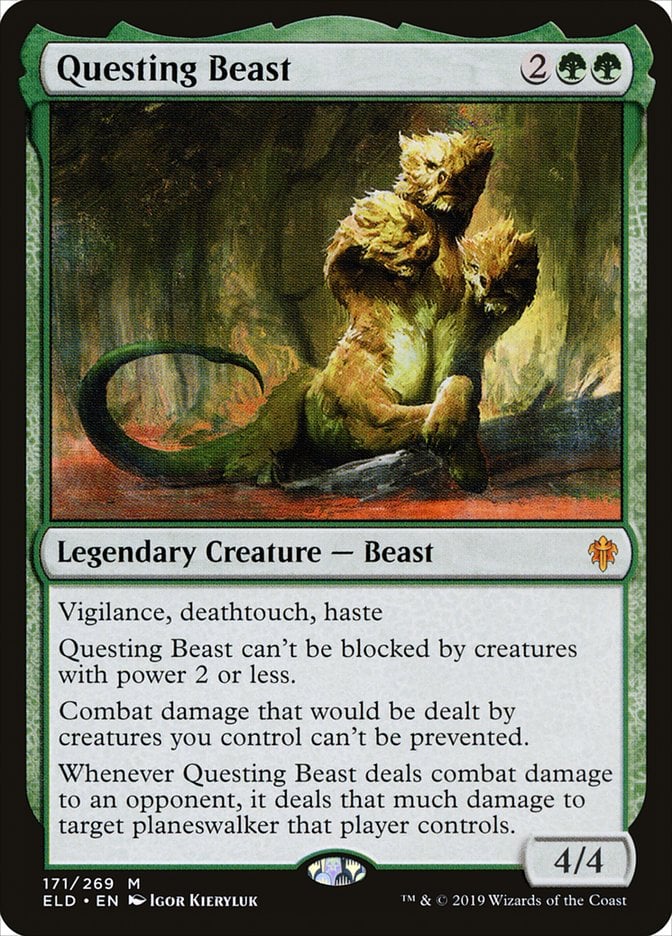
No, once your creature attacks a planeswalker, you cannot direct the damage to the player. On the defensive side, no, you cannot save a planeswalker by accepting damage to your life total instead. One unique interaction is the great Questing Beast which can deal bonus damage to a planeswalker if it hits a player.
Can You Have Two Planeswalkers in a Deck?
You can have a maximum of four planeswalkers with the same card name in your deck, just like any other MTG card. You can have more than one of the same type of planeswalker in your deck, however. For example, you can have four Ashiok, Nightmare Muses and four Ashiok, Dream Renders in your deck (depending on the format and legality of the cards, of course).
How Many Planeswalkers Can You Have Out?
There's no limit to the number of planeswalker permanents you can have in play! It may hurt your head trying to manage 100 passive and loyalty abilities, but that's completely fair game. The only restriction is that you can't have two copies of the exact same planeswalker card in play.
How Many Planeswalkers Can You Have in Your Commander Deck?
Again, there is no limit. Just make sure you abide by the singleton and color identity rules of the format.
How Does a Counter Doubler Work on Planeswalkers?
Counter doublers are excellent with planewalkers as long as they don't specify a nonloyalty counter, because such effects will add loyalty counters when the planeswalker enters. The + loyalty abilities do not add additional counters since the +ability is seen as a cost to do the ability, not the ability itself.
Can a Planeswalker Lose Its Spark?
Yes, planeswalkers can lose their spark. This essentially traps a planeswalker on a plane and has major implications.
What Happened to The Compleated Planeswalkers?
SPOILER ALERT, Ajani is included in Modern Horizons III, and Vraska and Jace are on Thunder Junction as some of the best cards in Outlaws of Thunder Junction.
Nissa was un-compleated by the end of March of the Machine‘s story. Nahiri was cleansed in the March of the Machine: Aftermath, while Lukka and Tamiyo were defeated during MOM‘s story. To get the tasty details on how things came to pass, you can go farther back than Phyrexia: All Will Be One story if you want to, and check out the flavor in the lore and story summaries.
How Do You Get Planeswalkers on MTG Arena?
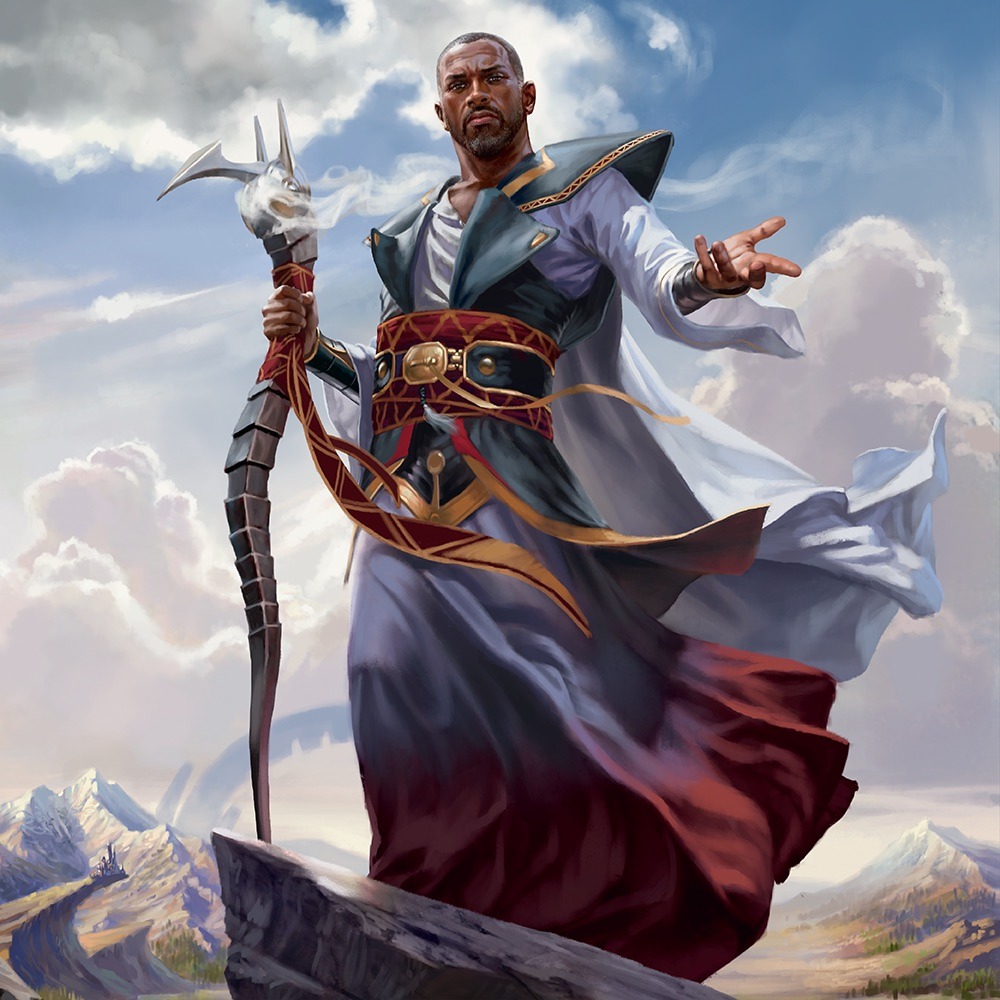
Teferi, Hero of Dominaria | Illustration by Chris Rallis
Getting your hands on planeswalker cards in Arena isn’t as difficult as it might seem. The first is pretty much what you’d expect: open them in packs. If you’re wondering how you get packs, there’s a bunch of ways. You can snag some free ones using promo codes, buy them in the Arena store using gold or gems, or earn them by playing the game or participating in events.
Next, you can craft planeswalker cards (any card, really) using wildcards. Sometimes a bundle for a new set will feature a legendary that is a planeswalker, so the card can be straight up purchased. The pack bundle, for instance, appears in the Arena store during spoiler season before a set releases and may guarantee a headlining planeswalker.
The last way to get a hold of them is by using codes included in official products. These are four simple ways you can add all the planeswalkers on MTG Arena to your digital collection!
Decklist: Superfriends Deck in Commander

Deploy the Gatewatch | Illustration by Wesley Burt
Build your own Gatewatch and put together more planeswalkers than your opponents can handle, superfriends in Commander is a type of deck that puts as many powerful planeswalkers together to overwhelm opponents. Check out the decklist featuring a Commander that you'll almost never play as a creature, The Prismatic Bridge, and have some fun at your casual Commander table. This style of deck accrues so much value from turn after turn of loyalty abilities. They naturally stretch your life total since attacks need to be dedicated to planeswalkers to take them out. These multicolor decks can draw out the saltiness in some but are a blast to play.
End With the Ultimate
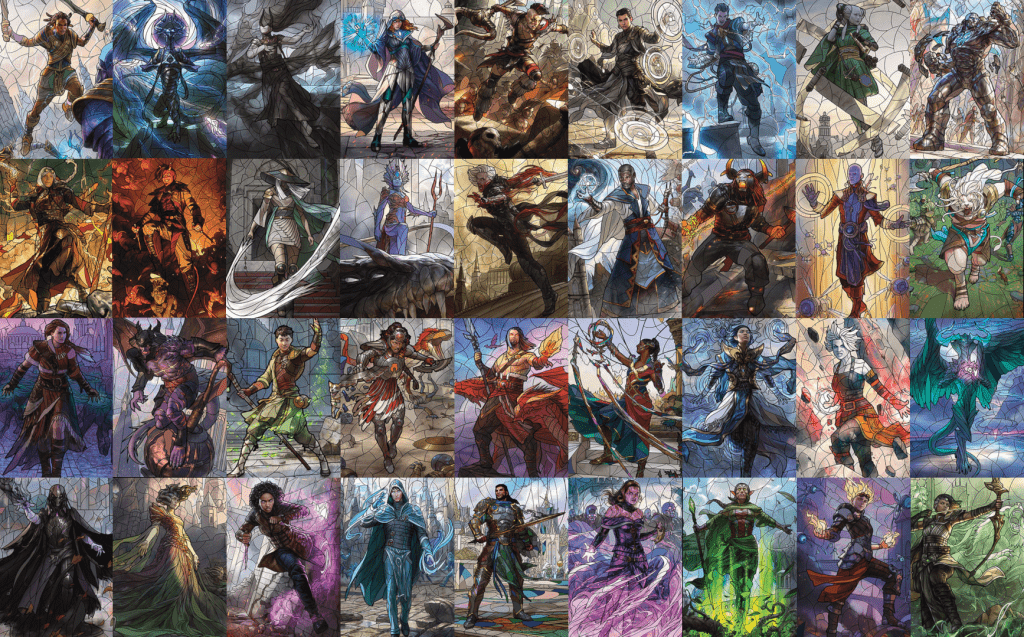
Would you have believed that there are more than 300 different planeswalker cards? Me neither! Now you know about them and can wonder at all the work that has gone into them all the way from creating this card type nearly 20 years ago.
With that, you’ve come to the end of this article. Hopefully, you find it as helpful as I’ve had fun writing it. See you again soon, planeswalker!
Follow Draftsim for awesome articles and set updates:
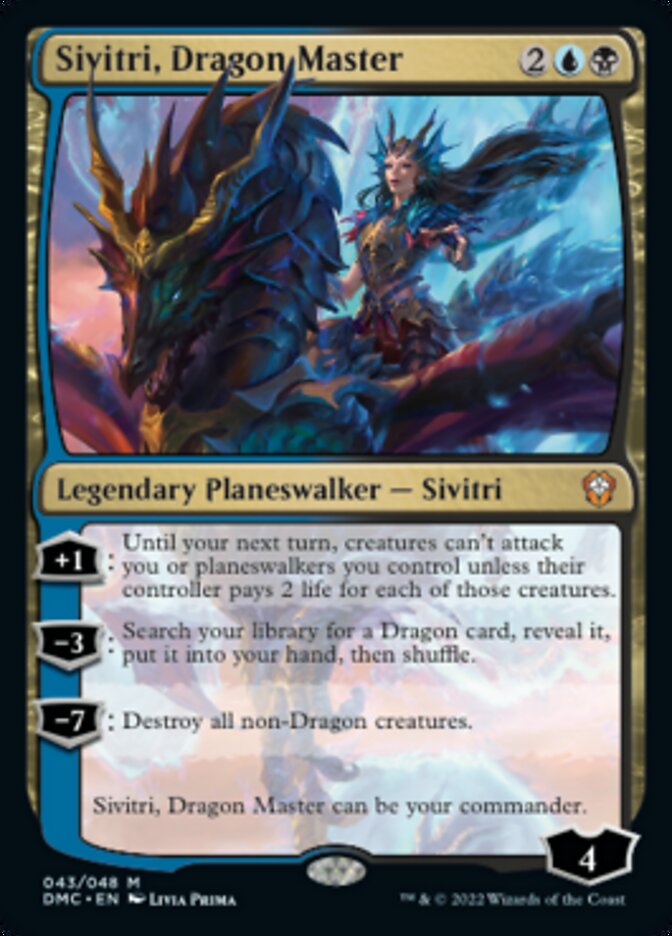


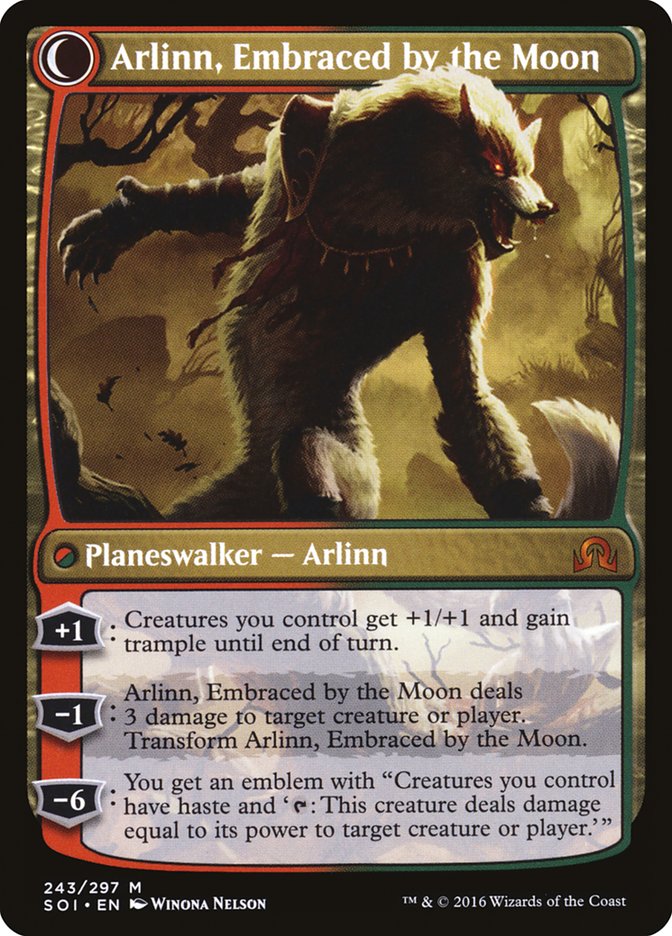
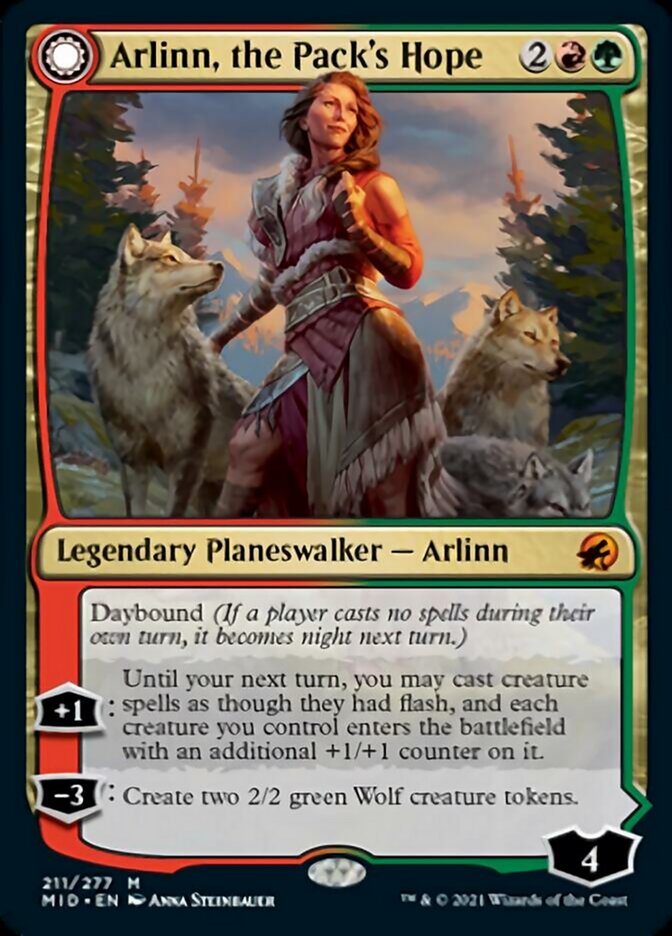

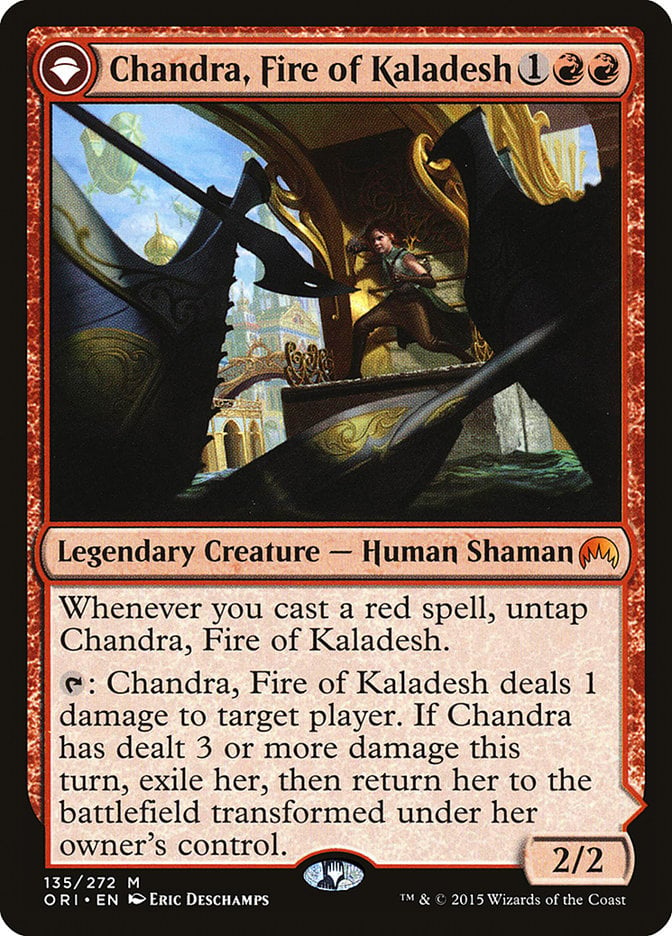


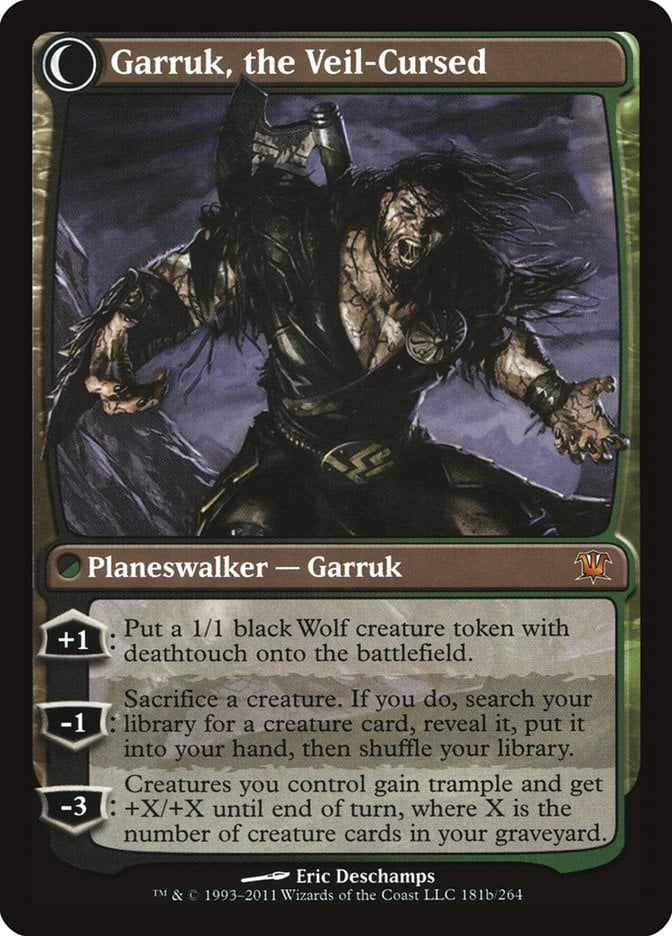

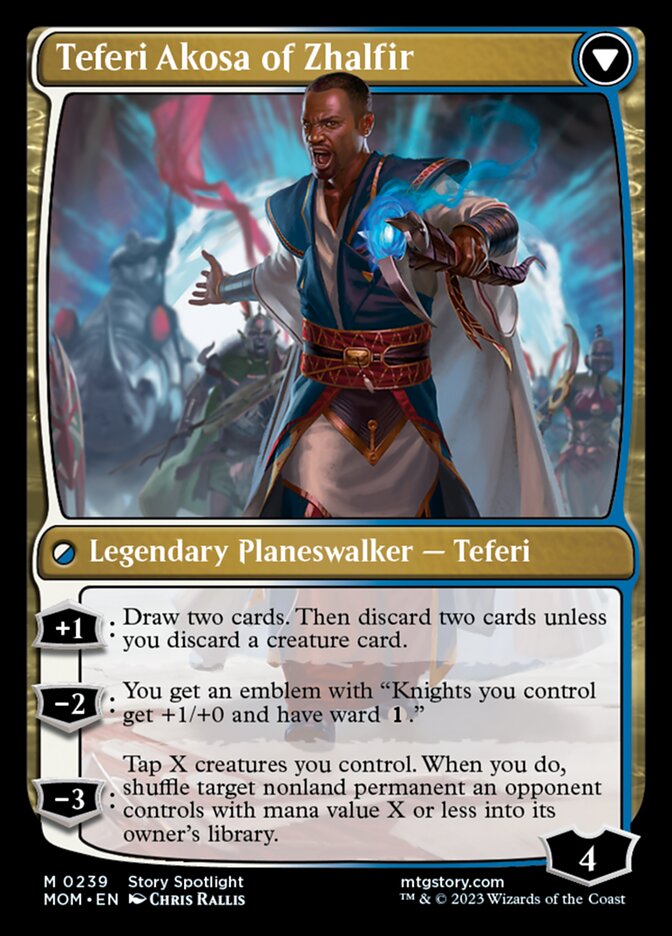
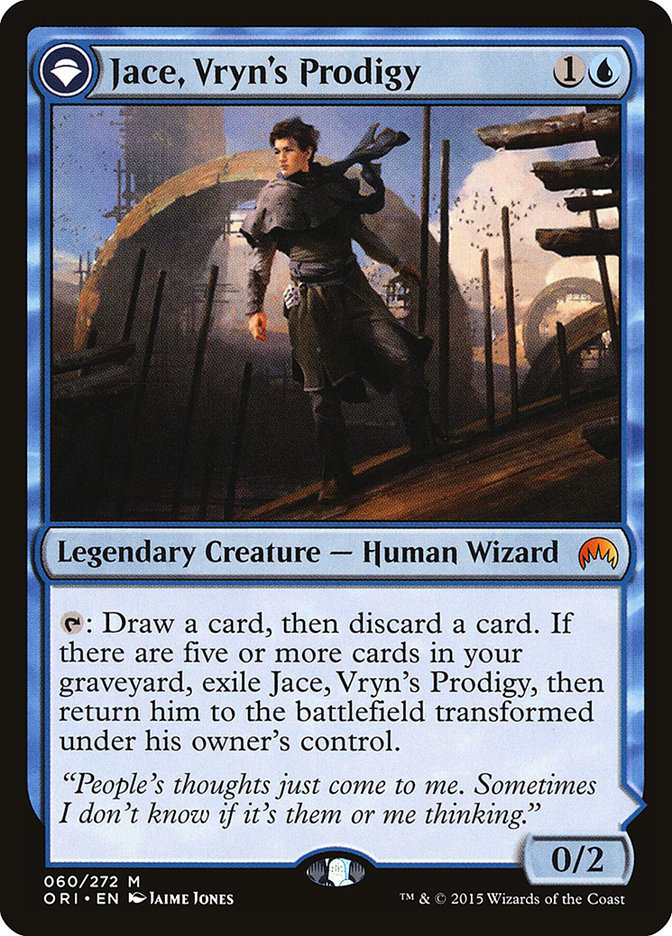

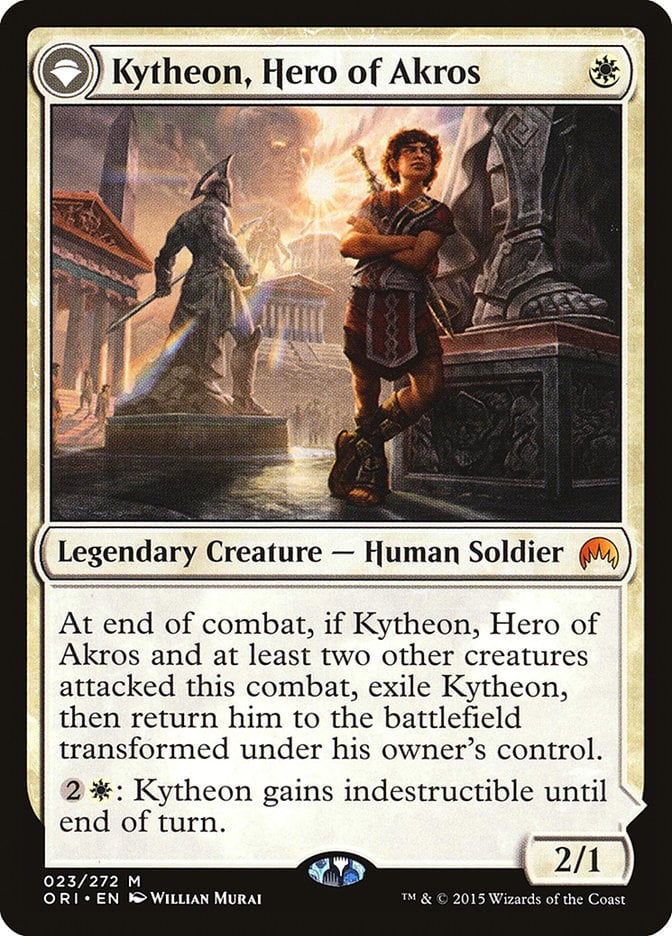


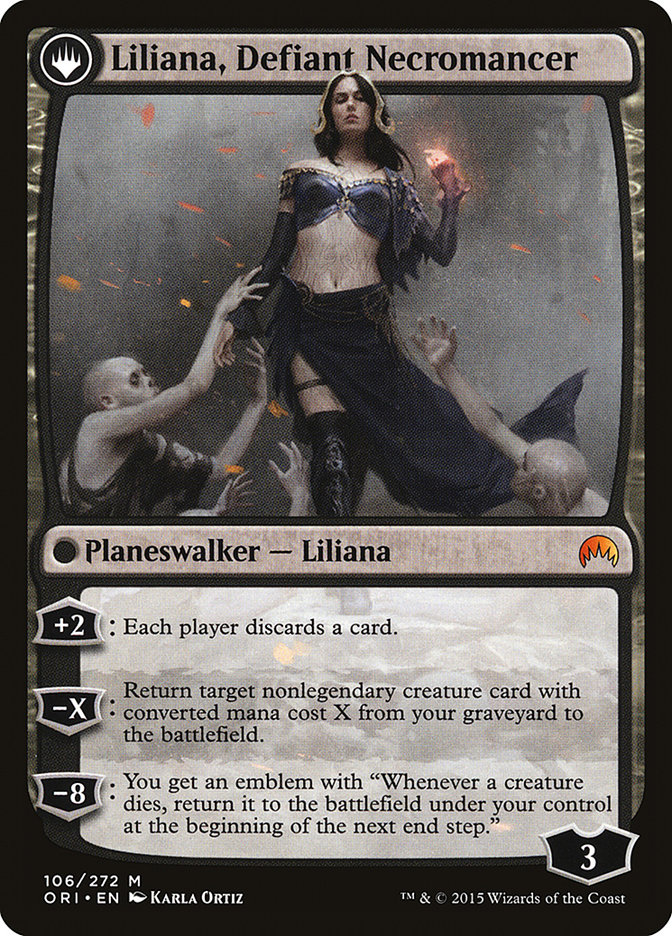
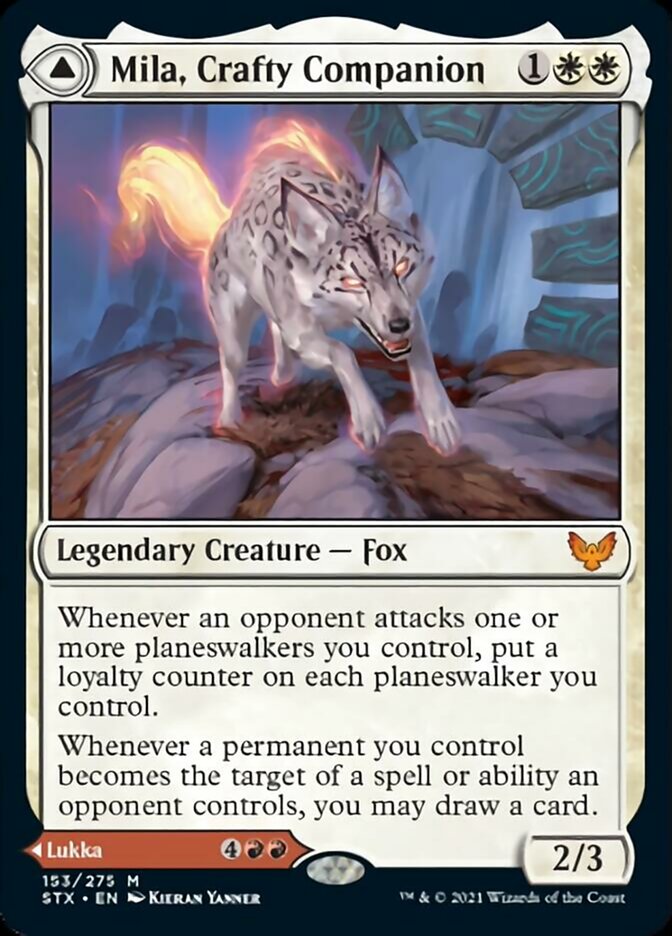

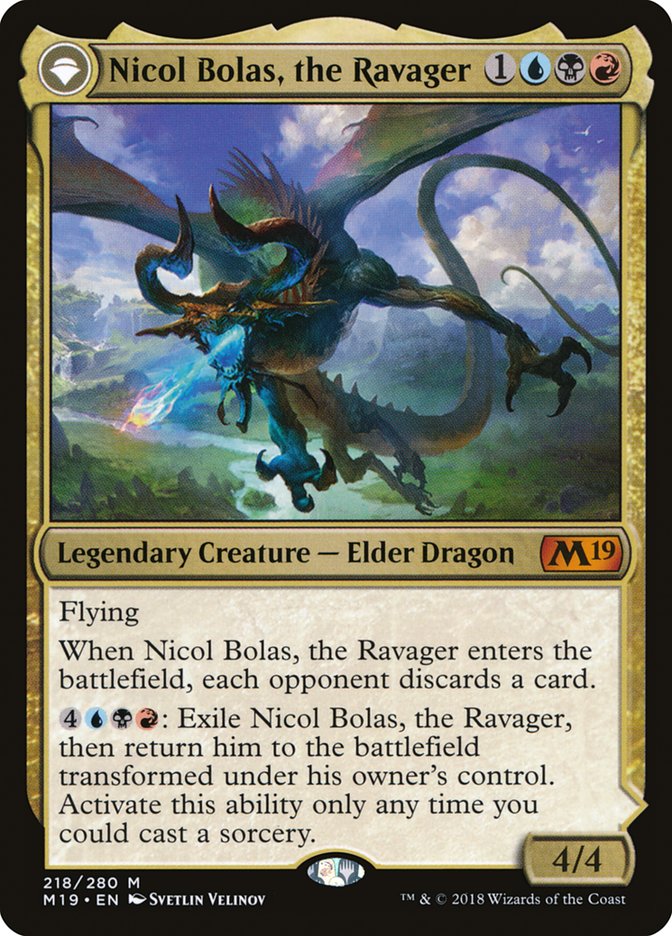

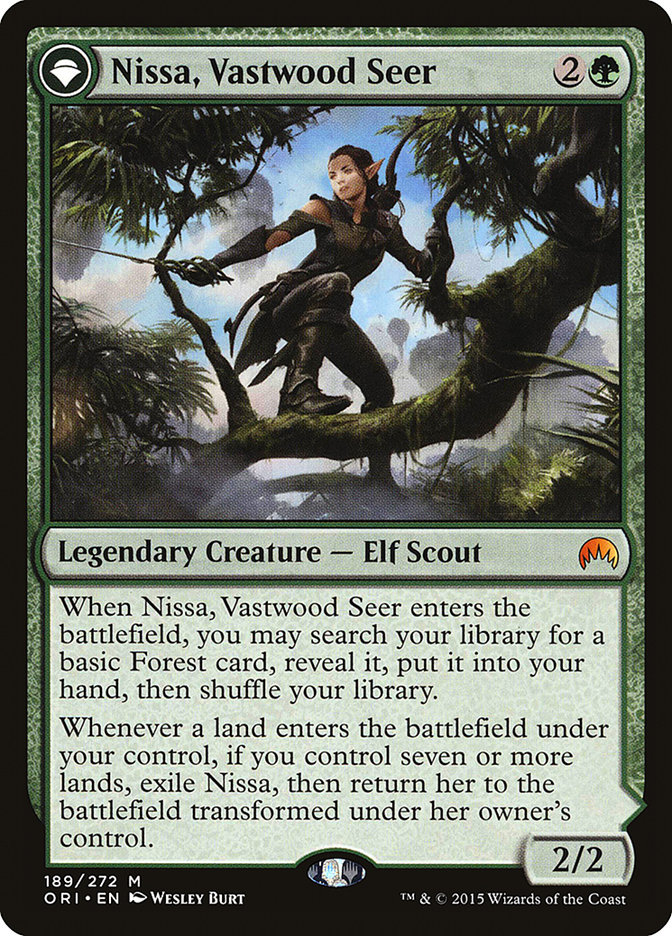


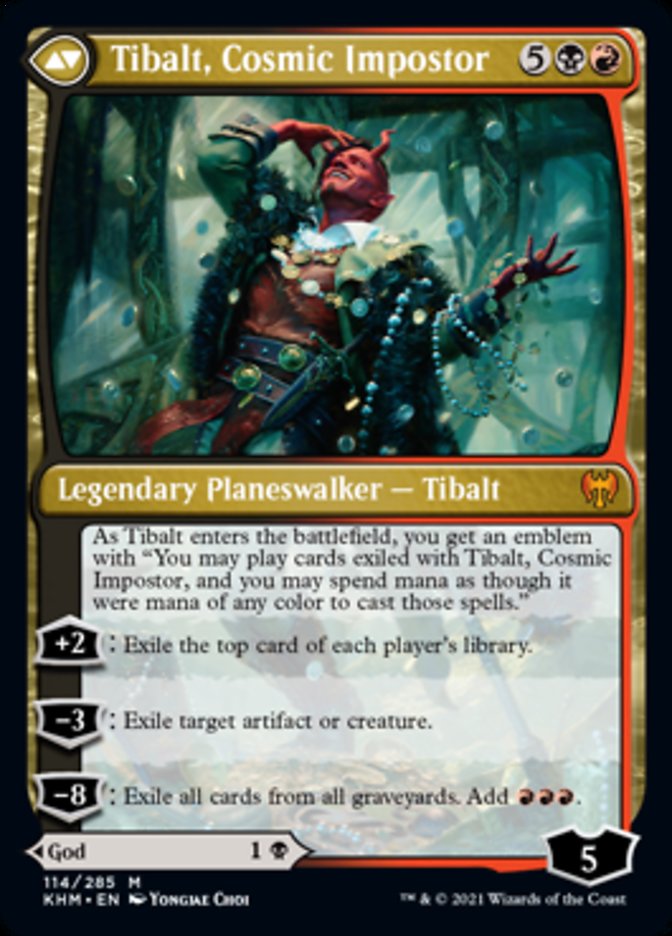

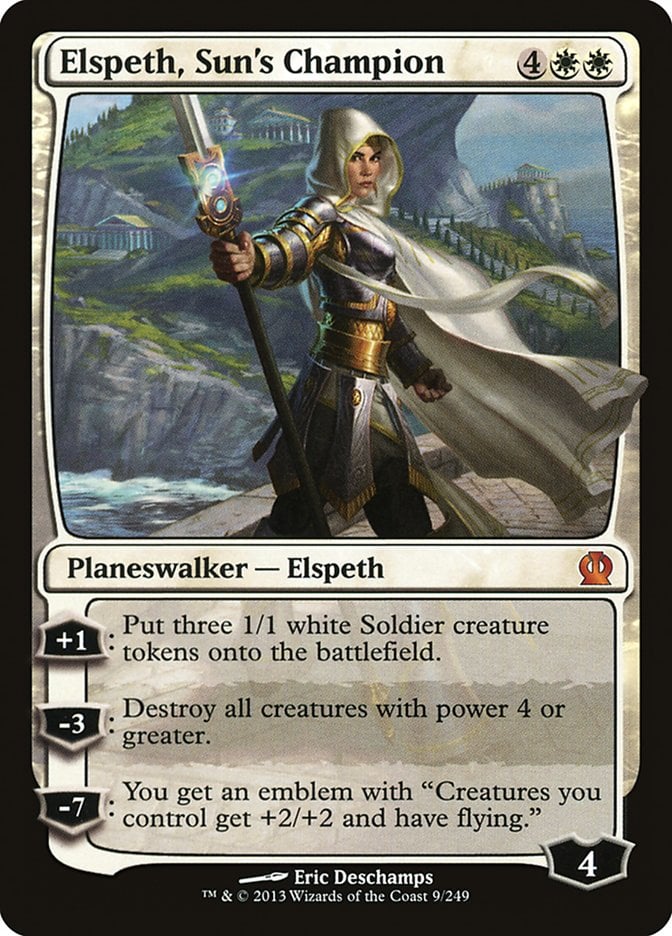

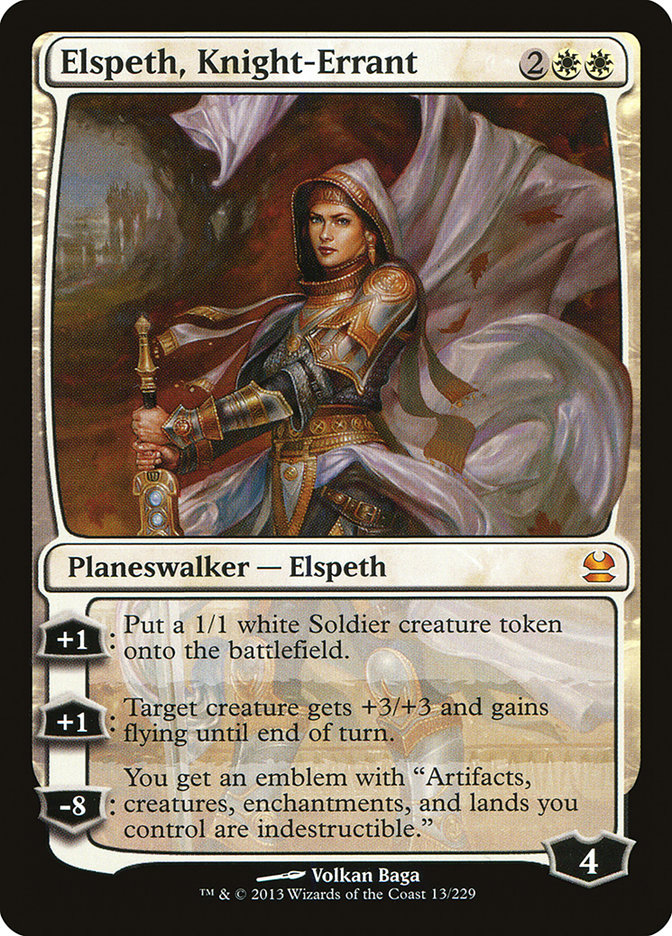
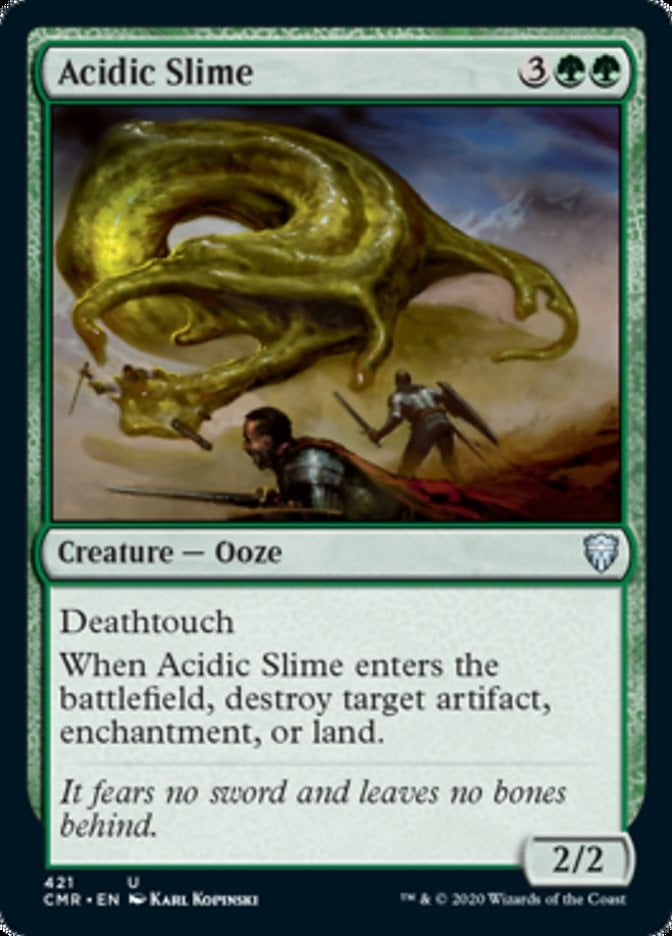
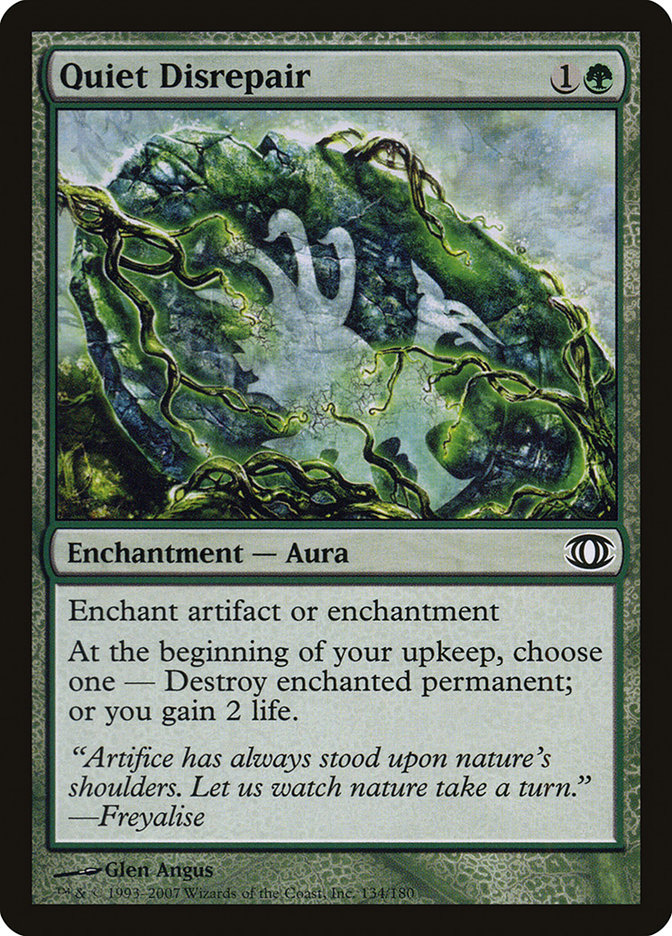
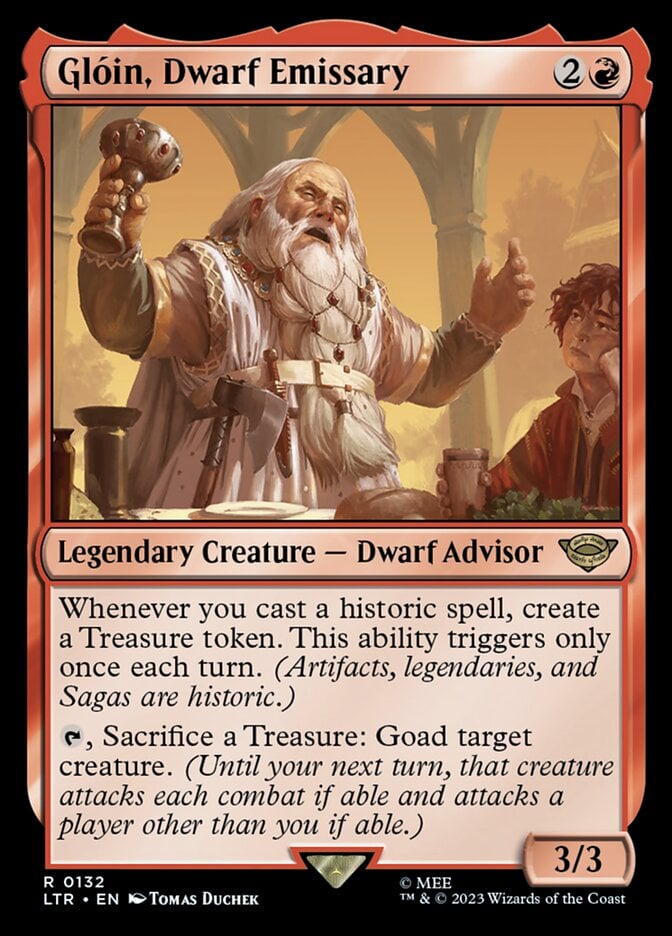
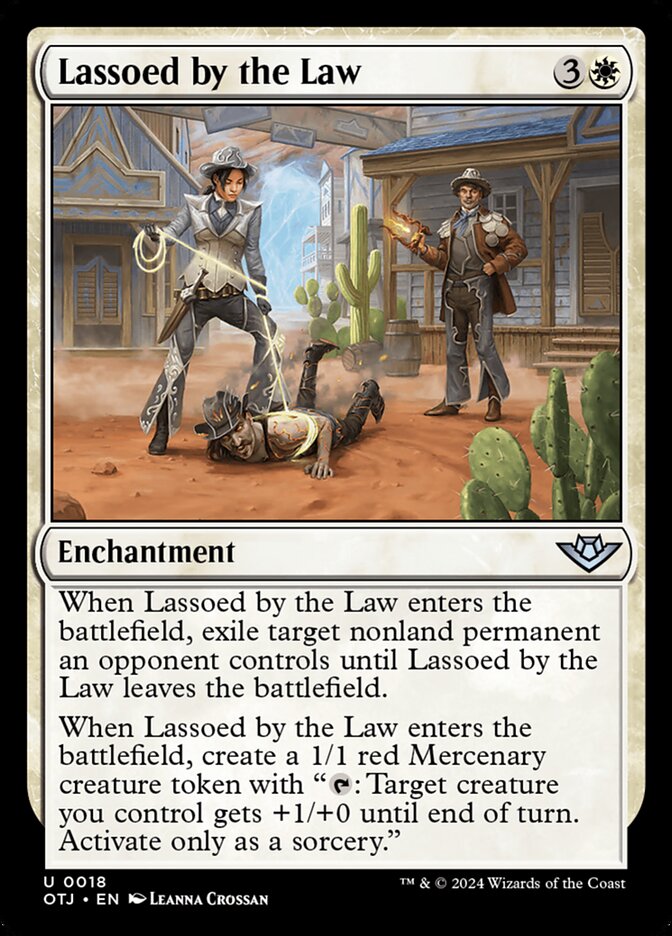
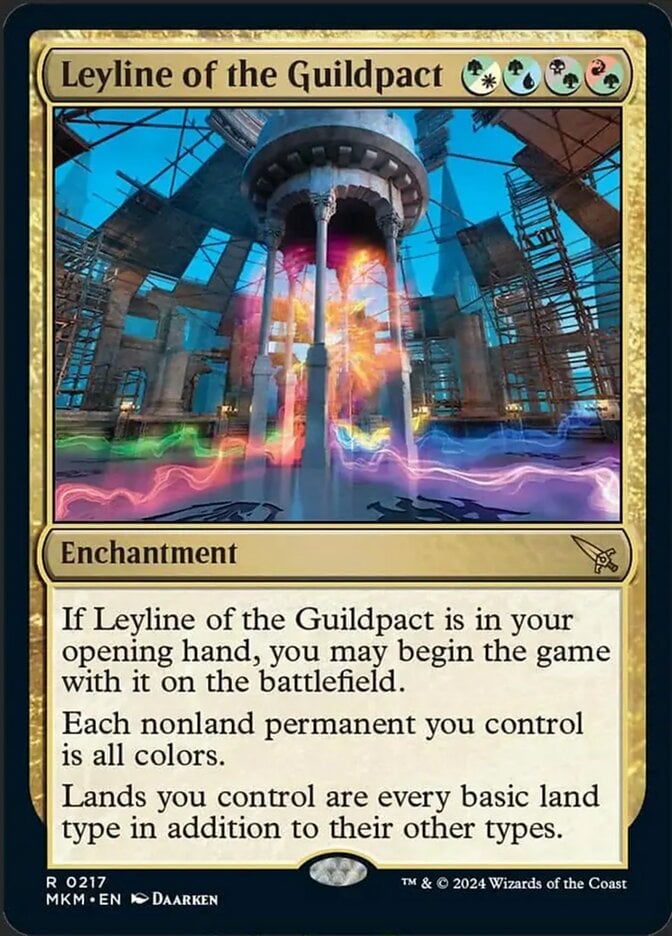
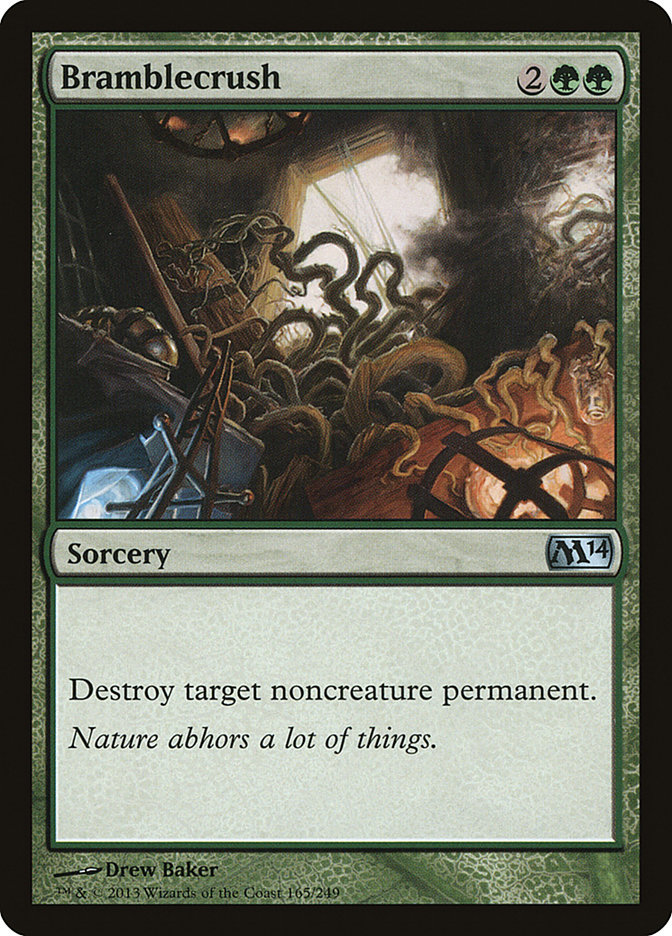
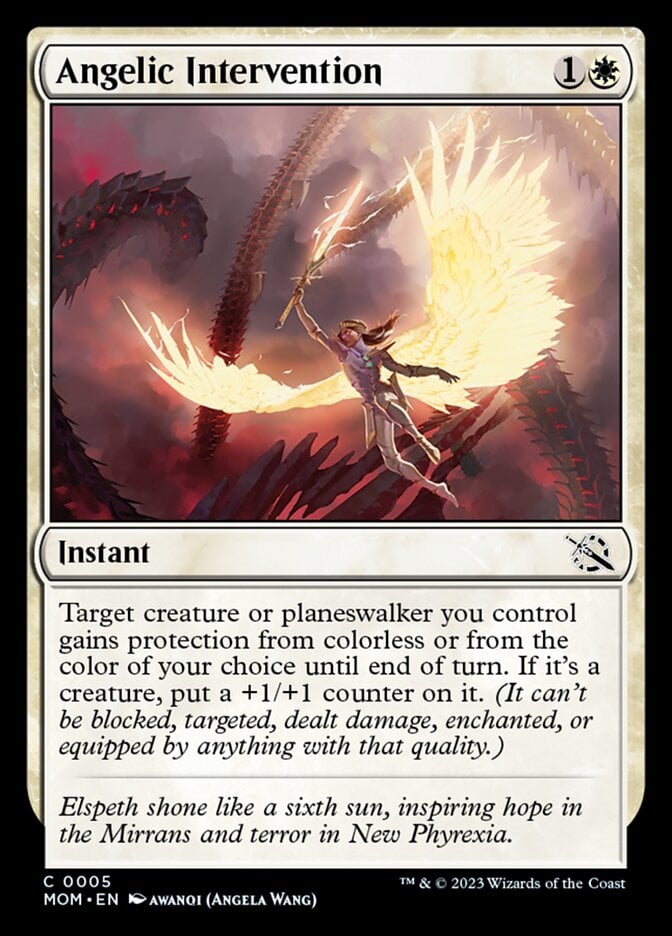
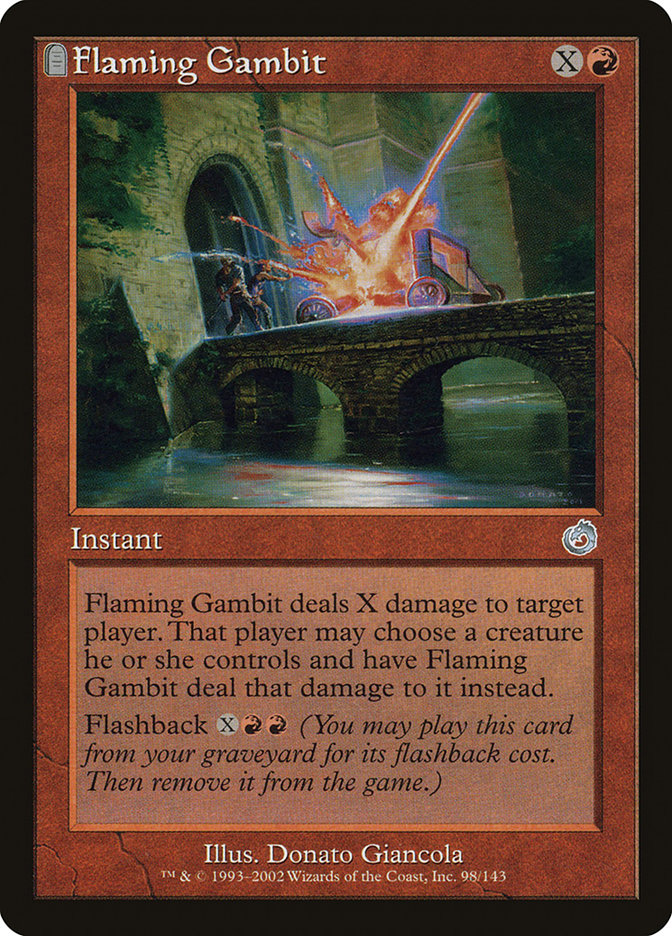


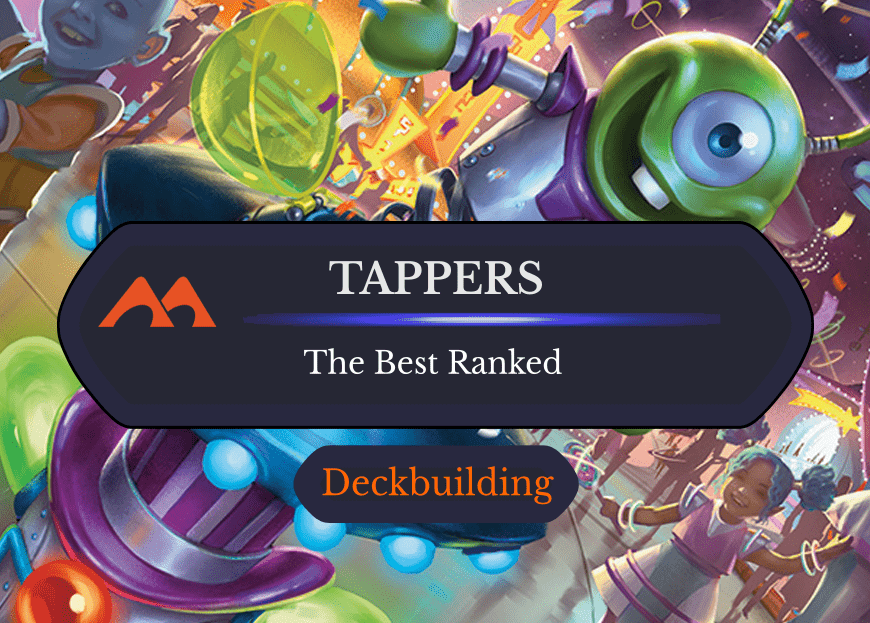
8 Comments
Nissa isnt the first green plansewalker thats garruk
Yep, that’s what the article says here: https://draftsim.com/mtg-planeswalkers/#The_First_Planeswalkers
I am a new player playing a 60 card deck. My question is can I have lets say a two colored deck with a one colored planeswalker?
Yep! Since it’s not Commander you can put any cards in your deck your lands can reasonably cast.
To be fair, lorewise, Tezzeret has been around since the old days. I recall him being a Planeswalker in Magic the Gathering: Battlemage. Even if they weren’t a card type back then.
Which booster set or draft give you a better chance of getting a planeswalker?
All modern sets have approximately the same chance of opening one. Your best chance in paper is probably collector boosters or set boosters since those have more rares and mythics. But honestly if you want planeswalkers, you should just buy singles.
Also, I guess War of the Spark had a bunch at uncommon, which was unusual. Those are less powerful, but if you’re desperate to open one in a pack, you’re guaranteed one there.
Add Comment